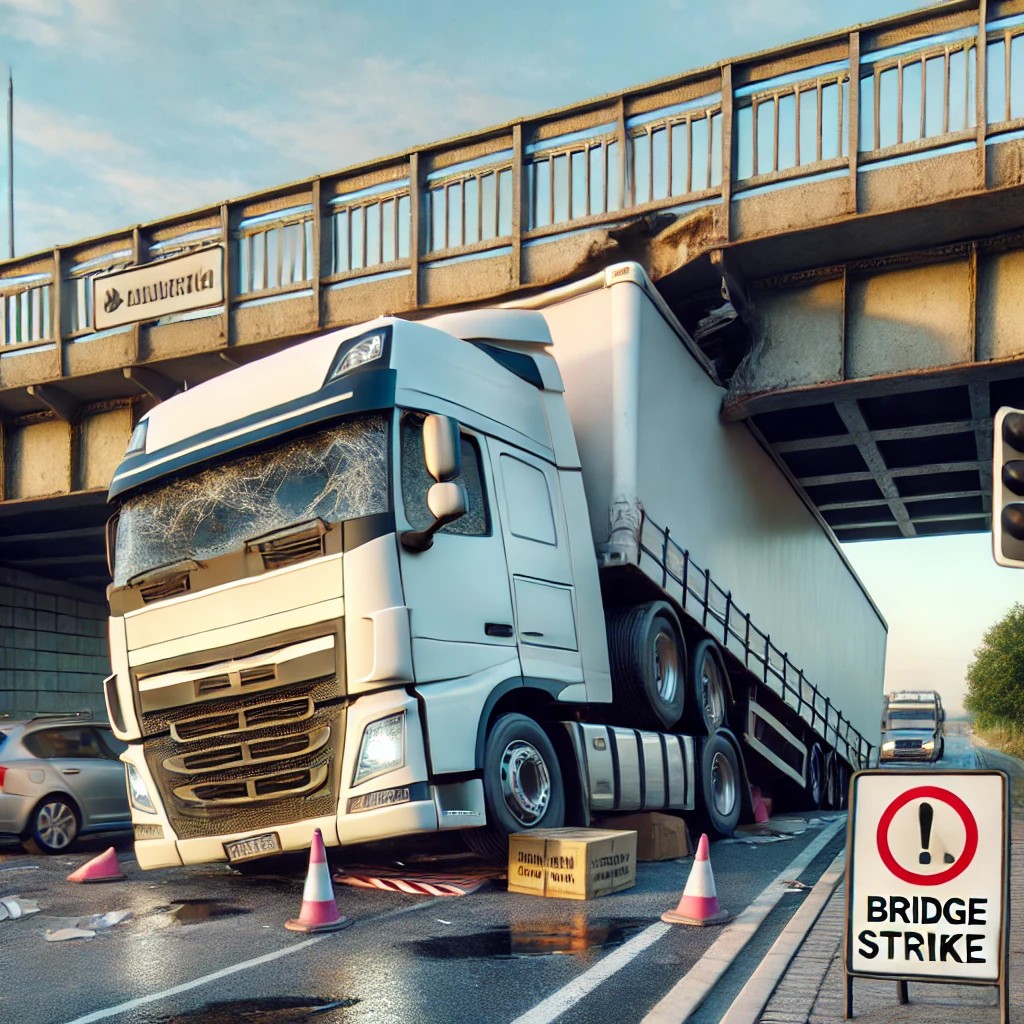Bridge strikes have long been a persistent issue for the UK road haulage and logistics industry, leading to costly delays, damage to infrastructure, and risks to public safety. While recent statistics indicate a positive downward trend in the number of incidents, there remains a significant need for improvement and education within the sector.
Bridge Strike Statistics Over the Years
Data from recent years shows the fluctuating but overall downward trend in bridge strikes:
- 2019/2020: 1,825 strikes
- 2020/2021: 1,650 strikes
- 2021/2022: 1,864 strikes
- 2022/2023: 1,588 strikes
- 2023/2024: 1,523 strikes
While the decrease in bridge strikes from 2019/2020 to 2023/2024 is encouraging, the issue remains a challenge. Notably, the spike in incidents during 2021/2022 highlights the importance of consistent efforts to maintain progress and prevent regression.
Causes and Impact of Bridge Strikes
Bridge strikes often occur due to insufficient planning, lack of driver awareness, and inadequate training. Common contributing factors include:
- Failure to account for vehicle height during route planning
- Poor signage or misunderstanding of restrictions
- Inexperience or insufficient attention from drivers
These incidents have significant consequences:
- Infrastructure Damage: Bridges require costly repairs and inspections after strikes.
- Operational Disruption: Strikes cause delays and diversions, affecting delivery schedules and increasing costs.
- Safety Risks: Bridge strikes endanger road users and can result in severe accidents.
Key Measures to Reduce Bridge Strikes
The downward trend in bridge strikes is partly due to improved awareness and targeted measures implemented by the haulage and logistics industry. These include:
- Enhanced Route Planning Tools: Advanced GPS systems and apps that account for vehicle height and bridge clearance have become essential.
- Driver Training and Education: Comprehensive training programs to raise awareness about vehicle dimensions and route compliance are increasingly common.
- Clearer Signage: Local authorities and transport organizations have made efforts to improve bridge height signage, reducing confusion for drivers.
- Industry Campaigns: Initiatives such as Network Rail’s "Lorries Can’t Limbo" campaign have been instrumental in spreading awareness about bridge strikes.
What More Can Be Done?
Despite progress, bridge strikes remain a significant issue. To further reduce incidents, the industry must:
- Invest in Technology: Encourage widespread adoption of telematics systems and driver assistance technologies to prevent route planning errors.
- Strengthen Compliance: Operators should integrate bridge strike prevention into regular compliance checks and audits.
- Enhance Training: Make bridge strike awareness a mandatory part of driver CPC training and onboarding processes.
- Collaborate: Work with local councils and transport bodies to identify high-risk areas and implement preventative measures.
- Promote Reporting: Encourage the reporting of near-misses to gather data and develop proactive strategies.
Conclusion
The decrease in bridge strikes from 1,825 in 2019/2020 to 1,523 in 2023/2024 is a testament to the industry’s efforts to tackle this issue. However, with over 1,500 incidents still occurring annually, there is much work to be done. By continuing to invest in education, technology, and collaboration, the road haulage sector can build on this progress and further reduce the frequency of bridge strikes.
Explore our services at www.hauliershub.uk and www.transportldp.co.uk for more insights on road safety and compliance or to learn how we can support your operations.










